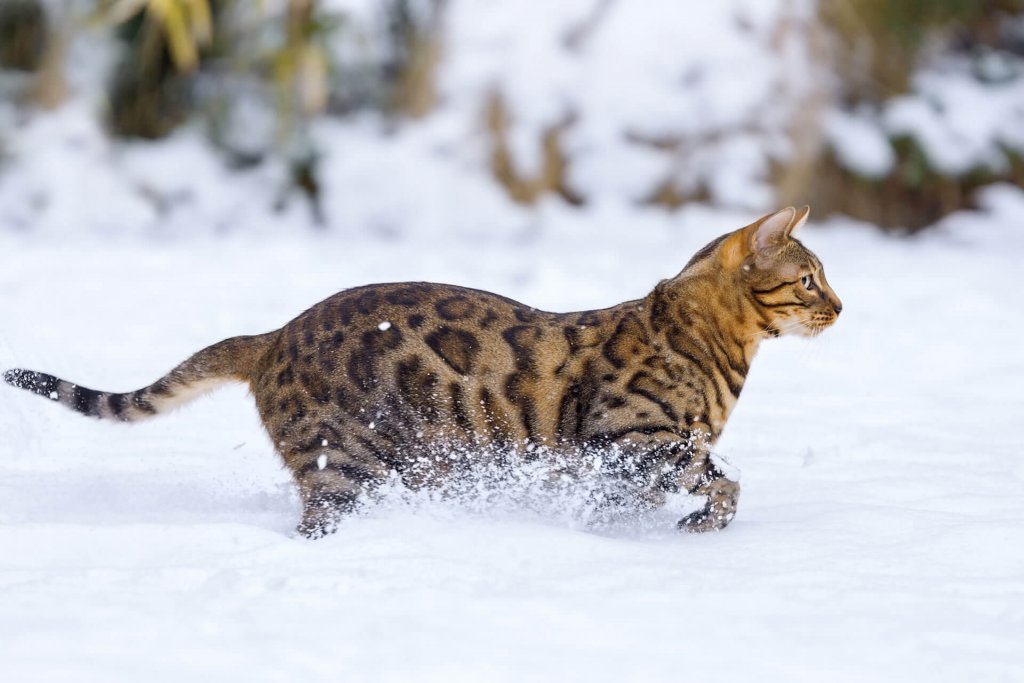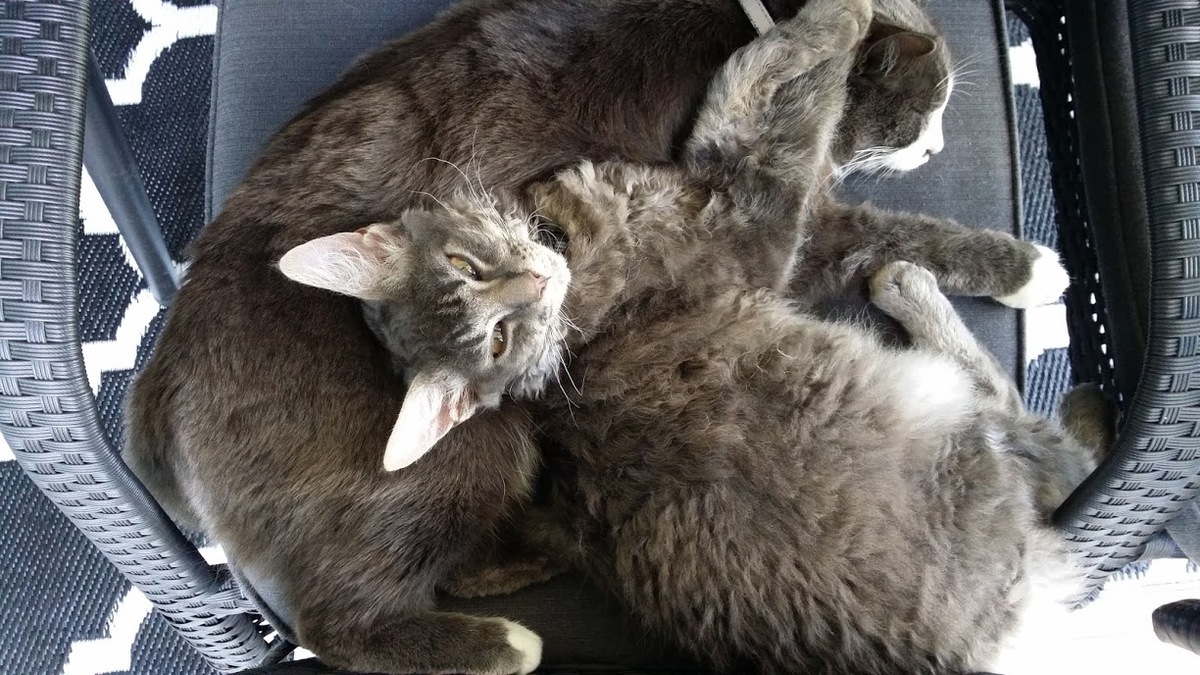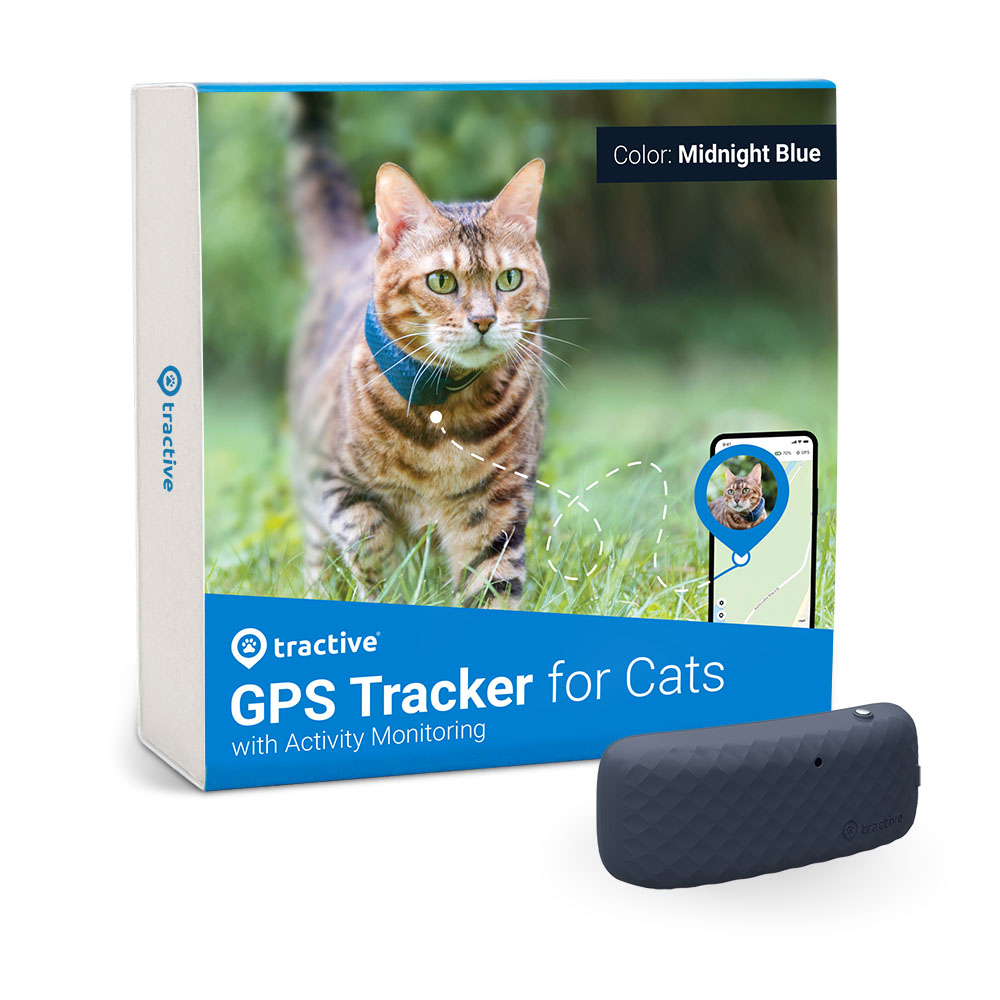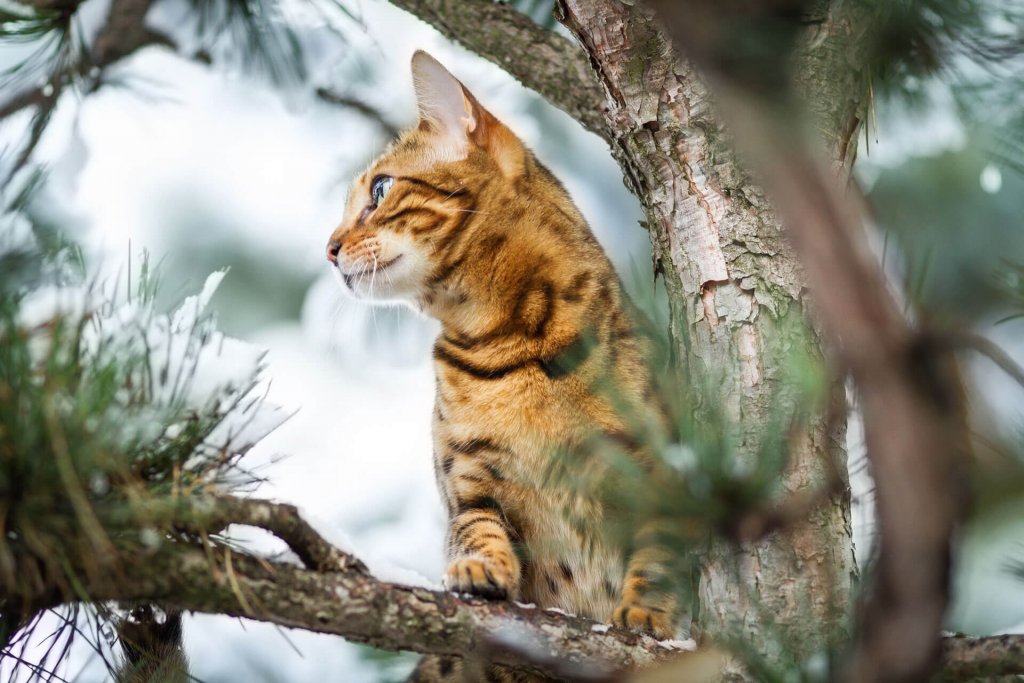What to Do With Stray Cats in Winter
Outdoor cats tin can easily adjust to many types of weather. But on bitterly cold winter days, outdoor cats can use assistance from their human friends. A dry shelter box and actress food can help your kitty to become through the toughest part of winter. In this mail, we'll cover everything you need to know about outdoor true cat care in wintertime and how to protect your feline friend(south) during the coldest flavor.
Tabular array of contents
- Tin cats survive wintertime outdoors?
- What temperature can cats still survive outside?
- Bring your cat within
- Provide warm, dry shelters
- Building or ownership a true cat shelter: what is best for outdoor cats?
- Why size matters with cat shelters
- What to put in your outdoor cat shelter
- Insulate the shelter confronting moisture equally well equally cold
- Provide plenty of warmed food and water
- How much nutrient should I give a cat in the winter?
- Where to place food and water
- How to keep outdoor cats' food and water from freezing
- Track your cat'south winter adventures with a GPS cat tracker
- Know everywhere your true cat goes
- Stray cats, feral cats, and outdoor cats: what'southward the difference?
- Stray cat winter condom tips
- How to get feral and stray cats to use your shelter and feeding station
- Make cat care role of your winter routine
Can cats survive wintertime outdoors?
Cats that spend the entire year going outdoors will grow a thick coat of fur as common cold weather approaches. Your outdoor cat probably has strategies for staying warm and dry when outside in the winter – a secret nook to stay out of the weather, a neighbor that leaves pet food outdoors, or a lucky spot for hunting rodents.
Surviving the winter outdoors is one thing – staying healthy and strong is another. You can assistance your outdoor cat survive the winter in better condition by providing a cat shelter, lots of food, and unfrozen water in very cold conditions.
What temperature can cats nevertheless survive outside?
Experts agree that outdoor temperatures under 32 degrees Fahrenheit (0 degrees Celsius) tin can pose a danger to cats if they do not take access to a suitable shelter. When temperatures drop below freezing, cats tin be at hazard for hypothermia and frostbite, both of which are life-threatening conditions.
An indoor cat that goes outdoors only occasionally will not be able to handle below-freezing temperatures for more a few minutes. For cats that are primarily indoor cats, continue them inside when the thermometer falls below 45 degrees Fahrenheit (7 degrees Celsius) just to be on the rubber side.

Bring your true cat inside
The best way to protect your cat from common cold temperatures is to bring them within where they tin stay warm and cozy with access to plenty of nutrient, water, and snuggles. For indoor cats, this should exist no problem.
If you lot have an indoor/outdoor cat, try to bring them indoors at night when temperatures are the coldest. Exist sure they have access to a shed, barn, or cat shelter to go out of the weather during the day.
If you treat a true outdoor cat or you support stray or feral cats, providing shelter is very important, every bit well as offering unfrozen h2o and dry out food. Note that many of the creatures that outdoor cats hunt, such every bit mice and small animals, are hunkered down in the wintertime, so the cats' natural food supply is limited in very cold conditions.
Provide warm, dry shelters
If bringing your cat indoors is not an selection, you can create a simple shelter box to keep kitty warm, safety, and dry out all winter. Shelters are also a manner to offer a warm retreat for stray or feral cats in your neighborhood during common cold atmospheric condition.
Building or buying a cat shelter: what is best for outdoor cats?
You can build a permanent shelter out of wood, similar to a small doghouse, using plans that are available online. Or, yous can buy a set-made or easy-to-assemble cat shelter from a number of online retailers.
An outdoor cat seeking a warm hideout is not going to be fussy near the type of shelter you provide in winter. However, your neighbors might appreciate it if the shelter somewhat attractive, well camouflaged, or hidden in a wooded or brushy area.
A less expensive DIY cat shelter tin be built from a plastic storage tote. Apply a box cutter to cutting out forepart and rear openings that are about half-dozen to eight inches square – but large enough to let a cat squeeze in, but small enough to continue the cold air out. A safety flap on the doors volition further protect kitty from the cold. Just exist sure the flap does not prevent the true cat from easily entering and leaving the shelter box.
Why do you need a second door opening on the rear of the shelter box? If an unwanted intruder, such as a wild creature, enters the shelter, the cat will have an escape hatch to make a quick exit.
Use duct tape or caulk to firmly attach the lid to the tote. Set the shelter box on a pallet, a few boards, or bricks to elevate it off the cold, damp basis. Raising the box a few inches will help to insulate it and keep rain or snowfall from seeping in through the doorway from the ground.
More tips on creating a heated outdoor cat house
Why size matters with cat shelters
Unless yous plan to run an electric heater to your cat shelter, information technology's important not to make the shelter too large. That's because the simply source of heat in the shelter is the cat itself.
In a small shelter box, the cat's body rut volition warm the infinite quickly. If the shelter box is too large, the cat's torso heat volition dissipate into the large space and the cat will not be able to stay as warm. Just be sure the shelter box is large enough for the cat to stand up upwardly and turn effectually inside.
What to put in your outdoor cat shelter
The chief job of the cat shelter box is to protect the true cat from cold, rain, and snowfall. Do not put nutrient in the cat shelter – place it in a covered feeding station instead. Food could concenter unwanted visitors to the cat shelter and put your cat at take a chance.
Straw is the all-time material to lay on the floor of the shelter box. Harbinger repels moisture, is a skillful insulator, and cats can couch into it to stay warm. Remember that straw and hay are not the aforementioned – hay will become moldy and does not insulate as well equally harbinger. Change out the straw periodically all winter.
Insulate the shelter confronting moisture likewise equally cold
Don't put towels or blankets in the shelter box. These will pull heat away from your true cat rather than insulating them. Towels and blankets also hold moisture, which volition create an unpleasant damp and chilly surroundings.
Seal all seams and openings of your shelter box to continue out rain and snow. Y'all can utilise caulk or waterproof tape for this task. If the box's lid won't stay on, or the unabridged shelter is lightweight and could exist easily tipped or blown over, put bricks or rocks on acme of the shelter to hold everything in place. Exist sure to bank check the cat shelter correct later on a heavy rain or snow to make certain that the shelter's interior is dry and moisture has non seeped in through the doorways.
Provide enough of warmed food and water
In very cold atmospheric condition, any nutrient and water you leave out for your true cat tin can freeze before it'due south eaten. Unless you lot want to place fresh food and h2o outside for your cat several times a solar day, invest in heated bowls.
How much food should I give a cat in the winter?
Cats who spend most of their time outdoors in the winter need extra nutrient. These cats expend extra energy to stay warm, so requite them more food than you would in warmer weather condition. Remember, if your cat is a hunter, the critters that they rely on as prey are probably hiding in their burrows for the winter and are unavailable.
Canned true cat food freezes quickly when information technology's very common cold outside. Consider offering dry kibble, and lots of information technology! Your true cat will thank yous.
Cat Body Condition Score: Is Your True cat Underweight Or Overweight?
Where to identify food and water
Food and water should exist placed where your cat spends their time outdoors. Considering you will demand put out fresh food and water daily, choose a spot that's convenient for you, also. You want to avoid trudging through deep snow or mud if possible! A covered feeding station is a good option. This volition continue pelting and snow from falling onto the nutrient, and make feeding time a little flake more comfortable for your kitty.
How to keep outdoor cats' food and water from freezing
Heated bowls can proceed water and canned true cat nutrient from freezing. These heated bowls plug into an electric outlet, so consider how you will set up this upwards outdoors to safely adjust the plug and cord. You may want to keep the heated food and water bowls on your porch, as long as you are okay with stray critters perchance visiting and then close to your home.
If you use unheated bowls, note that water will typically freeze faster in stainless steel bowls than in plastic bowls. Some types of plastic bowls are flexible, and so you lot can twist them to remove ice when the water has completely frozen over.
Rails your cat's winter adventures with a GPS true cat tracker
Another essential tool for outdoor cat care in winter is a GPS tracker for cats. With it, yous can monitor your true cat's adventures and whereabouts, see how long they've been out and how far they roam from home. While they are busy playing, you get peace of mind – that you'll be able to discover your fur-infant anywhere, anytime.
Hither's what one cat parent, Rickard, has to say virtually their experience with the Tractive GPS:
We were starting to let our Louie get outside by himself. He was wearing a Tractive cat tracker to calm our minds. Nosotros could rails him every twenty-four hours and see that he was moving further and further abroad from home each day he was outside. He always got abode before nightfall, but some days we did demand to go get him using the tracker to discover him. One evening we were starting to go worried – he had been in the same place for a few hours according to the tracker. It was starting to get dark so nosotros finally went there to observe him. The tracker took united states of america to a place well-nigh a kilometer down the road. We searched the area merely our Louie was non to exist constitute. Nosotros continued to search for the tracker in the bushes at the same fourth dimension as we searched for Louie in a larger area. Finally nosotros found Louie in the top of a tree in the very spot that the tracker had shown u.s.a.. He was stuck in a tree about 6-7 meters above the ground and seemed to agape to make a single noise. Speaking to the land-owners, we institute out that they had seen Louie earlier that 24-hour interval and that their german shepherd had chased him away. We borrowed a ladder from them and after some not so safe climbing we were finally able to become a hold of Louie and bring him dwelling house without any injuries. The tracker has saved his life once and could do so again.


Know everywhere your cat goes
See where they are in real-time, no affair how far they get. Get alerts if they roam too far habitation. Observe out where they've been and find their favorite spots. Let others rails with you lot.
Discover Cat GPS Trackers
Stray cats, feral cats, and outdoor cats: what's the difference?
You may see all types of cats outdoors at any time of year. Some cat lovers go all out to support stray or feral cats – as well known as community or neighborhood cats – with nutrient, water, and shelter all year long.
Whether cats are feral, stray, or outdoor cats, they are all domestic cats and members of the same species, Felis cattus. Information technology's important to recognize that stray or feral cats may take different levels of experience with humans, so you lot should non look to interact with them. Likewise be enlightened that of you own an outdoor cat or a kitty that explores the outdoors for part of the day, your cat may encounter stray or feral cats while they are out exploring.
How are outdoor, stray, or feral cats dissimilar from one some other? Many outdoor cats are cared for by someone and they have regular human being contact. For example, they may be fed regularly, receive veterinary care, and might go indoors for part of each twenty-four hour period or night. Basically, these cats accept a safe home base of operations.
Devious cats lived indoors at some point in their lives and had regular contact with people, only left their dwelling house or were abased. They no longer have regular contact with people. Because of their by socialization, devious cats may approach people or houses in the daytime. They are more likely to accept food and find shelter most people.
Feral cats may never have had contact with humans, or if they did, information technology was minimal. Feral cats are often afraid of people and do non seek interaction with humans. They are normally active only at night. Feral cats are often non neutered, and so they are the targets of many community Trap-Neuter-Return (TNR) programs which are designed to ameliorate the lives of feral cats and foreclose reproduction.
Any of these cats may exist attracted to the kitty amenities that yous place outdoors for your cat, including cat shelters, nutrient, and h2o. Always be aware that roaming cats may take different personalities and levels of socialization.

Stray cat winter condom tips
If you desire to help devious cats that roam your neighborhood to make it safely through the wintertime, here are a few tips:
- Before entering your car, tap loudly on the hood to make certain a cat has not subconscious nether the car or in the engine compartment for warmth. Check the cycle wells, likewise, as these are common hiding places for kitties.
- Check that your car is not leaking antifreeze, which can be toxic if licked past cats when they make clean their paws after walking through an antifreeze puddle. If you use antifreeze, continue it abroad from any places that cats have access to.
- Avert using ice-melting chemicals on your driveway or other paved surfaces. These substances tin exist toxic if a cat walks through a treated area and later licks the chemicals off their paws.
How to get feral and stray cats to use your shelter and feeding station
Stray and feral cats may be reluctant to approach your habitation or use the cat shelter yous have created for them. Place true cat shelters a short distance from your home, but not so far that you tin can't bank check on them regularly. Prepare out more than ane shelter box and then the kitties can choose ane to their liking, or go some privacy if other cats are using the shelter boxes.
Entice the cats to enter your cat shelter box by sprinkling catnip or treats just outside the entrance.
If cats turn down to utilise your shelter box, locate the expanse where they sleep – such as under a deck, or in a shed – and make that spot more comfortable by calculation harbinger bedding that they can sleep on.
Make cat intendance part of your wintertime routine
Living outdoors field of study to the whims of nature tin be challenging, even for the always-adaptable cat. You tin can help outdoor cats to successfully survive cold atmospheric condition by regularly offering food, water and shelter to go on them comfortable and well-fed.
Source: https://tractive.com/blog/en/safety/outdoor-cat-care-in-winter-cold-weather-safety-tips-for-cats